Verification and validation are critical to the maintenance of a strong food safety regime but verification and validation are two terms that are often confused.
To ensure that food safety is built into their processes and that problems are prevented or minimised before they occur, food companies need to:
- conduct a hazard identification and evaluation to determine what hazards need to be controlled – this includes biological, chemical (including radiological) and physical hazards,
- identify ‘preventive controls’ that will eliminate or significantly reduce the hazard – process controls – sanitation controls – supplier controls – allergen controls – other appropriate controls,
- determine the parameters for process controls,
- monitor the parameters,
- develop written corrective actions, and
- verify that the controls are working.
The above points are the essence of the FDA’s ‘food safety plan’ which needs to address:
- hazards that exist,
- preventive controls that will be used to manage those hazards,
- ‘instructions’ describing how the preventive controls are implemented,
- the determination that things are working properly through monitoring, verification and record keeping, and
- corrective actions steps taken if something goes wrong.
In many ways, this is similar to a HACCP plan in that there are parallels between some aspects of preventive controls and HACCP. It is likely that in the food safety plan, the critical control points (CCP) of HACCP as well as operational prerequisite programs may be the preventive controls (PC) that are used to significantly minimise the levels of food safety hazards.
There are two overarching aspects of verification: one is the initial validation and the other is the evaluation that the system is performing as expected. Both of these aspects are directed at the effectiveness of the control for each significant hazard. They establish that the control is scientifically valid for controlling the hazard and verify that the control process or procedures are accomplishing the intended purpose to prevent, eliminate or significantly reduce the likelihood of the hazard.
There has been quite a bit of confusion in the past about verification and validations, especially since the US National Advisory Commission on Microbiological Criteria for Foods (NACMCF) definition for verification includes validation and excludes monitoring, and the Codex definition includes monitoring and does not specifically mention validation.
Validation
Validation is the initial determination that the controls are scientifically and technically sound to prevent the hazard. This initial validation will answer the question, “How do I know that what I’m doing is working so that I have achieved the reduction in the hazard that I’ve specified achieve (for example, 100% inspection for metal greater than 4 mm in size)?” The information to support the initial validation can be peer-reviewed public literature, regulatory guidance, trade association publications, a manufacturer’s technical information, company knowledge and initial in-plant data collection. Validation happens prior to putting the control or the plan into place.
Verification
Verification involves evaluating that all hazards, as determined by a hazard analysis to be significant, have been identified and determining that if the food safety plan is properly implemented these hazards will be effectively controlled. Another aspect of verification is evaluating whether the facility’s HACCP system is functioning according to the HACCP plan – in other words, “Am I doing what I say I’ve said I am going to do in the plan?”
Verification is a critical component of a food safety plan, because it demonstrates that you’re keeping tabs on your food safety system.
The five components of verification
- Validation – the scientific determination that a process works.
- Verifying that monitoring is occurring – observing the generation of monitoring records or having a supervisor or other individual repeat a measurement.
- Verifying that corrective actions are occurring – every single preventive control needs an associated set of corrective actions written in the food safety plan including short-term corrective action and root cause analysis. The food safety plan should also specify how the facility will react in the event of an unanticipated hazard.
- Verification of implementation and effectiveness of preventive controls – a qualified individual needs to oversee calibration and records review.
- Testing can be used as verification. Environmental testing can be used to verify sanitation efforts to assist in reduction of the potential environment cross-contamination. Also, similarly finished product testing can be used to verify process controls.
Reanalysis
Food safety plans must be reanalysed at least once every three years. There are several other things that can trigger a reanalysis sooner than the three years:
- Unanticipated hazard and subsequent ad hoc corrective actions.
- Significant change (a change in formulation, process, etc).
- Identification or awareness of a new significant hazard.
- If a preventive control is found to be ineffective.
Verification is one step to help ensure the food safety system is working to prevent, control or significantly reduce public health hazards. Verification includes validating the steps to ensure the process will work, and secondly, includes the evaluation activities that verify the system continues to work. Verification activities are clearly defined in the FDA’s proposed Preventive Controls rule, as well as in current regulated HACCP requirements.
Article by Foodprocessing.com.au, originally posted 9/4/15.



